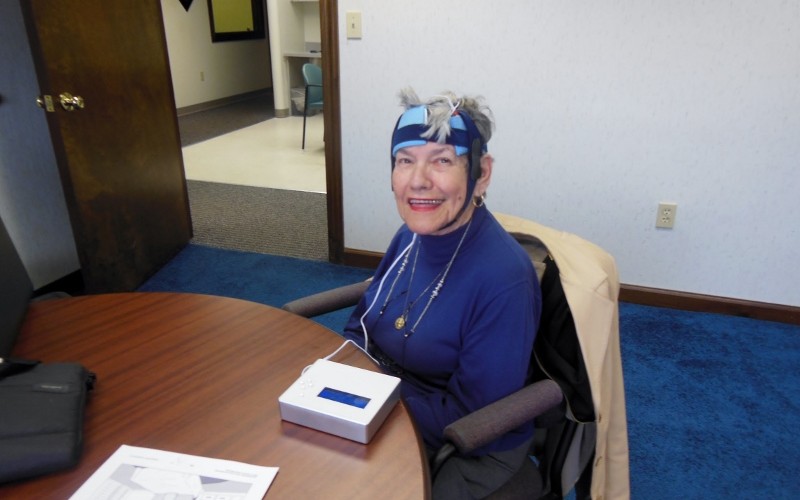
Transcranial direct current stimulation (tDCS) is a fairly new, non-invasive treatment for aphasia. While there have been a few studies using this device with persons with aphasia, it is not a widely available treatment at this time. It has been approved by the FDA for use in depression, pain, and stroke rehabilitation. We do provide this treatment to selected clients during the intensive aphasia treatment sessions. Dr. Bartels-Tobin has received training at Berenson-Allen Center for Non-Invasive Brain Stimulation through Harvard Medical School. To date, we have used this treatment with two clients at the Center with some great results. Click here to see these case studies.
tDCS uses a weak electrical current to change the brain. Two electrodes are placed—one is the anion (positive) that relays the current. The other is the cathodic (or negative) electrode that receives the current and discharges it. These electrodes are placed on or near the part of the brain we will be stimulating during therapy. Studies in stroke patients have found that both the anodic and cathodic electrode cause changes in the brain.
Anodic electrodes will cause the brain cells to fire because the cell membrane resting potential has been exceeded. This increases electrical potential of the neuron and allows for more firing, leading to long-term potentiation (LTP). LTP occurs when two neurons are stimulated at the same time or in a sequence. LTP is one of the mechanisms underlying neuroplasticity, which allows for learning and change in the brain. LTP is persistent, lasting from several minutes to months. All studies conducted with aphasia to this point have shown that weeks after the treatment, participants kept the gains made during the treatment with stimulation. tDCS is considered a safe treatment with minimal risk, although clients with pacemakers, cochlear implants, or ferrous metals in the head are not eligible for treatment at this time. Titanium in the head as well as skull depressions are considered safe for this treatment, although we request a medical review from your physician to ensure that there are no objects that may be contraindicated in your head.
This treatment has been used thus far to examine naming in aphasia, apraxia treatment, and language recovery. Current studies in Italy have used this treatment for 20 minutes daily for 10 non-consecutive days, showing that clients keep the trained skills weeks to months after training. We use this treatment daily for 4-8 weeks while providing another 4 hours of treatment with great results thus far. It is unknown at this time what the best brain areas are for treatment, how long the best treatment lasts, how long the results last, and the optimum number of treatment sessions. Each person's brain is set up slightly differently, so stimulating one area may have different effects for different people. This treatment is only offered to intensive program clients at this time since treatment/training must accompany stimulation and our results have all been from intensive clients.
